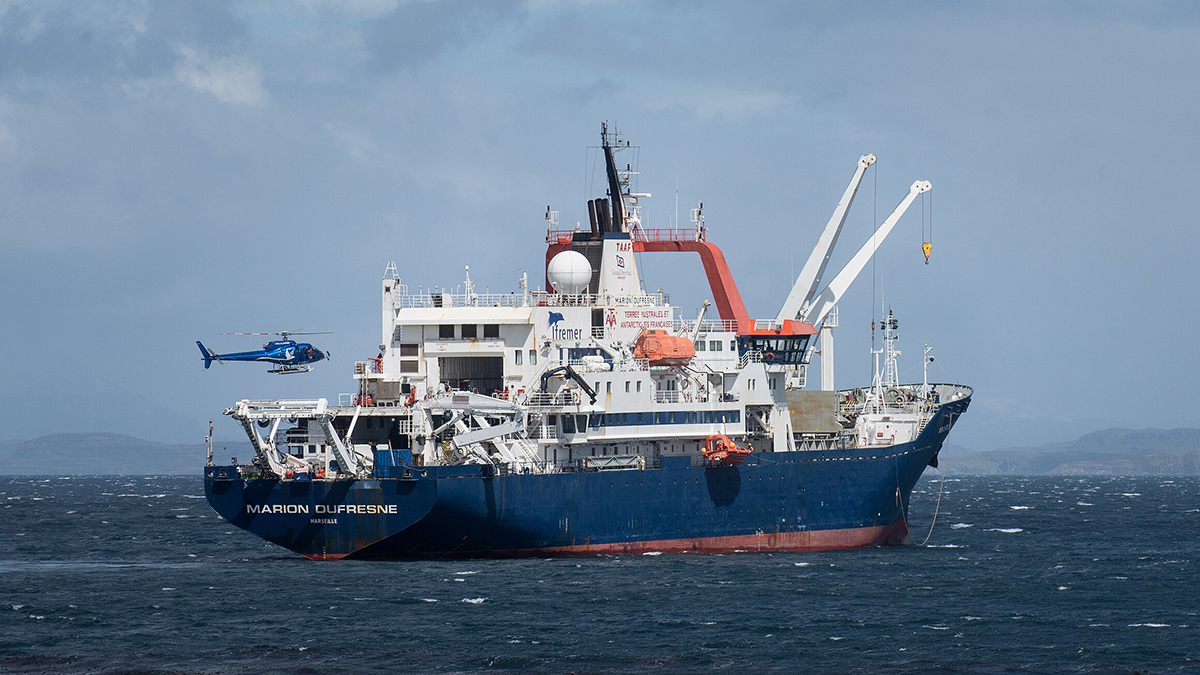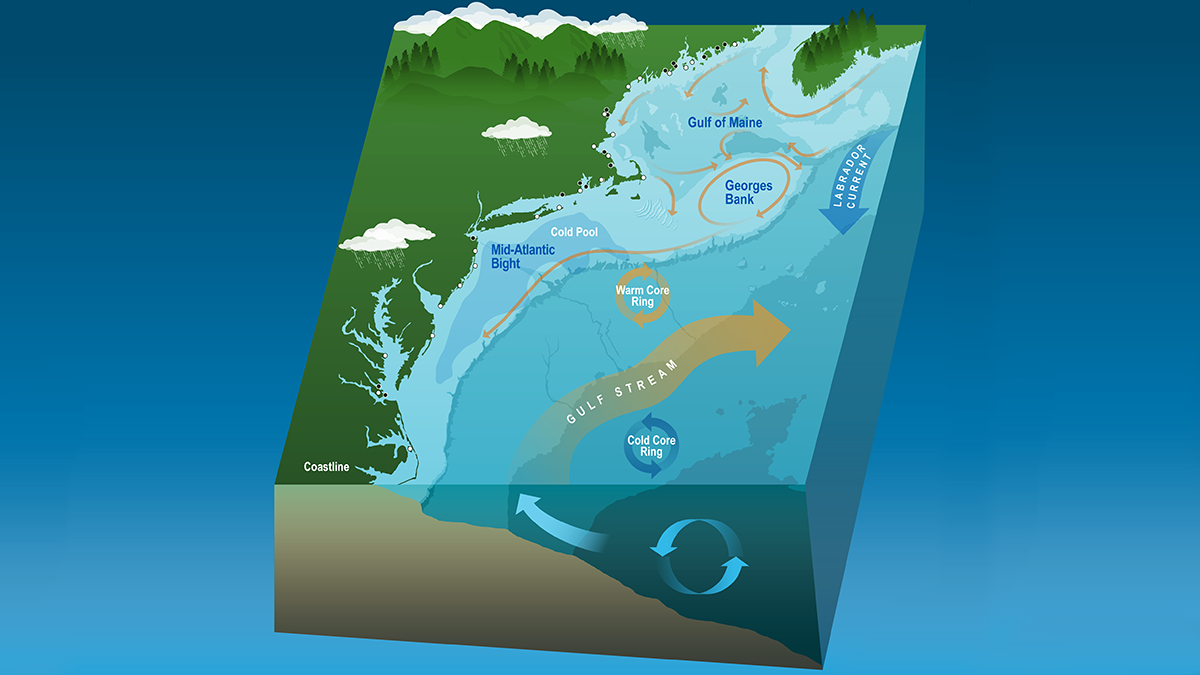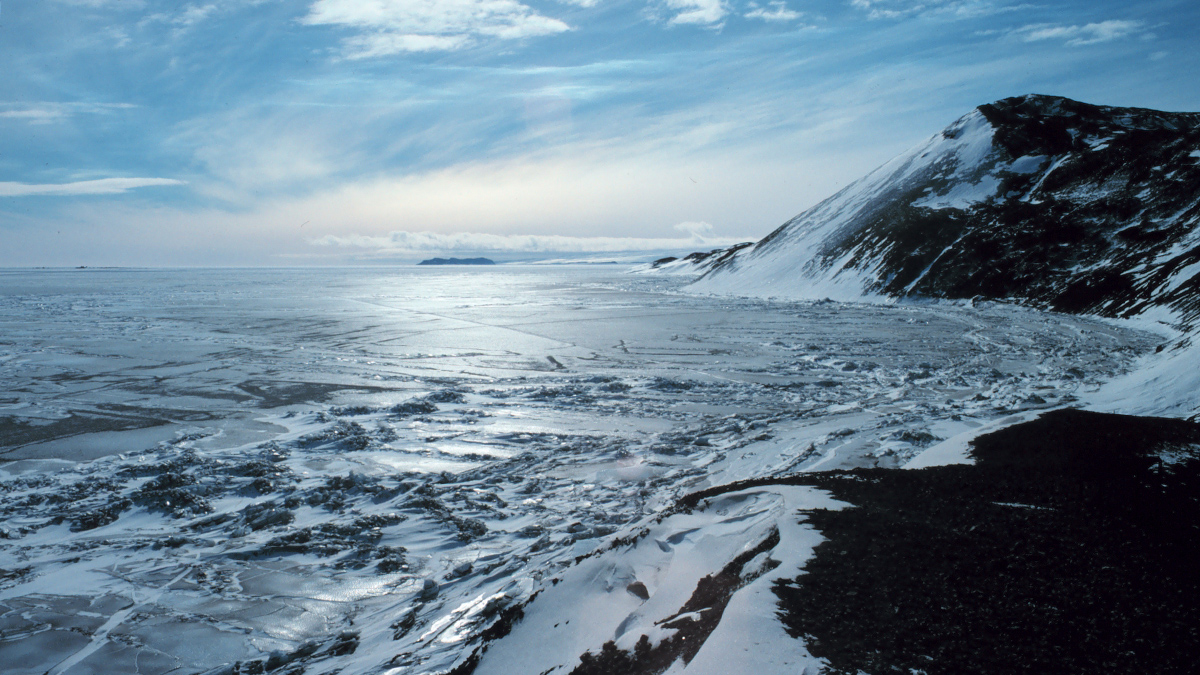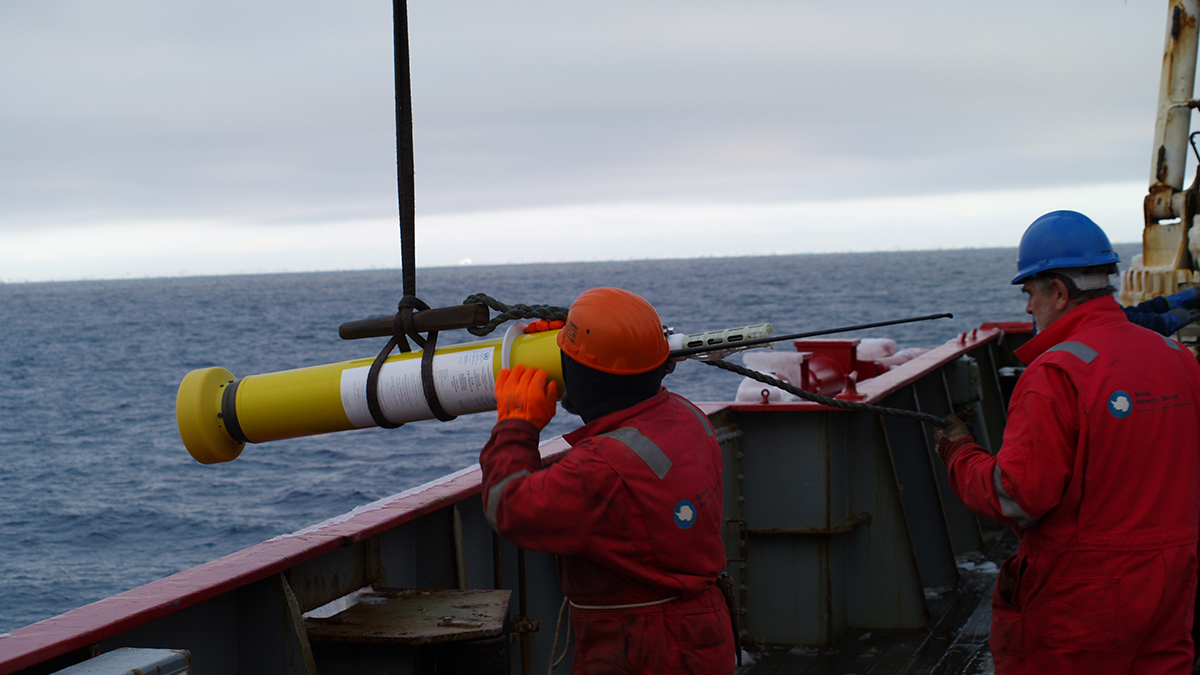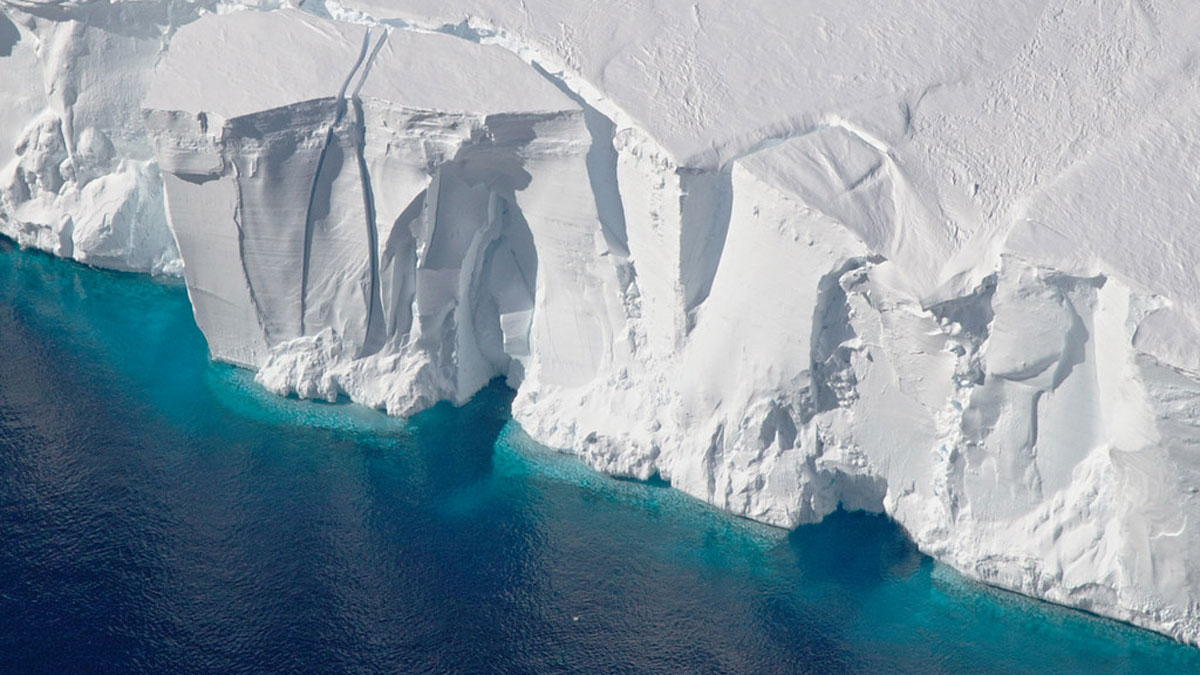A new study finds that phytoplankton blooms, often seen near the separation point of western boundary currents, are supported by nutrient supply upwelling and cross-shelf transport.
Journal of Geophysical Research: Oceans
Tracking Some of the World’s Fiercest Ocean Currents
During a voyage off the east coast of Africa, researchers collected detailed measurements of massive swirling currents that affect regional ocean conditions and fisheries.
Coastal Dynamics Revealed by Satellite Salinity Data
One decade of high-quality satellite salinity observations provide valuable insights into the complex dynamics in the Mid-Atlantic Bight.
Warm Seawater Encroaches on Major Antarctic Ice Shelf
In unprecedented detail, new research illuminates the seasonal flow of warm water toward the Filchner-Ronne Ice Shelf.
Cold Days Bring Fast Ice
Thirty-seven years of observations reveal the meteorological conditions that lead to persistent, thick fast ice in Antarctica.
Are Rogue Argo Floats Skewing Ocean Salinity Data Products?
Global ocean salinity products have become increasingly inconsistent since 2015, coinciding with a drift to higher salinity values in a number of Argo sensors.
Phytoplankton Shield Ice Shelves from Summer Heat
Spring blooms shade Antarctic ice shelves, causing them to melt 7% more slowly than they would if they were surrounded by clear, bloomless waters.
Dual Tsunami Generation from Atmospheric and Oceanic Sources
The 2022 Tonga volcanic eruption generated waves that propagated across the Pacific Ocean. A new analysis of sea level measurements is used to dissect the difference in wave components from two sources.
Radioactive Isotopes Trace Hidden Arctic Currents
Tracing anthropogenic radionuclides shows researchers how water from the Atlantic flows into and mingles with Arctic currents.


